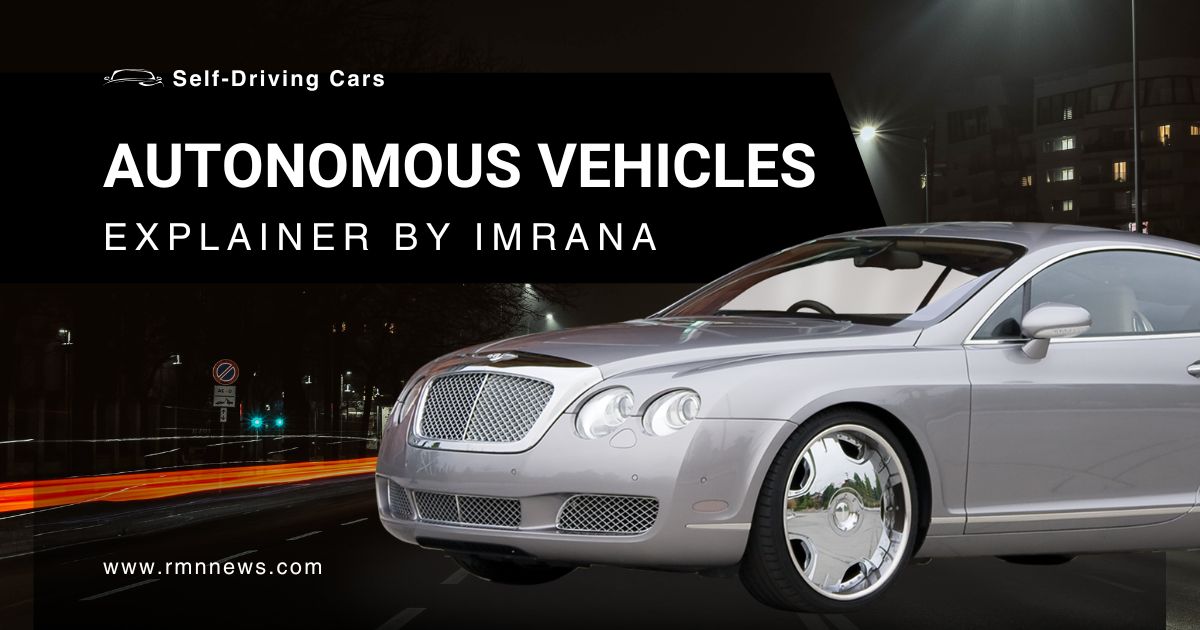Autonomous Vehicles: Promise, Peril, and Prudent Progress

Autonomous Vehicles: Promise, Peril, and Prudent Progress. Self-driving cars, or autonomous vehicles, are designed to operate without human intervention. Photo: RMN News Service
Autonomous Vehicles: Promise, Peril, and Prudent Progress
In this consultative piece, Imrana explores the implications of self-driving cars, discussing their potential benefits like increased safety and reduced pollution, alongside drawbacks such as accident liability, hacking risks, and job displacement.
What are self-driving cars, and how do they work?
Self-driving cars, also known as autonomous vehicles, are designed to operate without human intervention. They achieve this by utilizing an array of technologies including cameras, sensors, GPS, and artificial intelligence (AI).
These components work together to perceive the road, adhere to traffic regulations, avoid obstacles, and make driving decisions, similar to a human driver. Companies like Tesla, Waymo, and Volvo are actively developing and testing these advanced vehicles.
What are the main benefits promised by autonomous vehicles?
The primary benefits of self-driving cars revolve around enhanced safety and environmental improvements. A significant number of car accidents are attributed to human error, such as distracted driving or impairment.
Self-driving cars, being free from human limitations like fatigue or emotional responses, are expected to significantly reduce accident rates. Additionally, many autonomous vehicles are electric, which means their widespread adoption could lead to cleaner air and quieter cities by reducing pollution from petrol and diesel cars.
What are the potential drawbacks or risks associated with self-driving cars?
Despite the promising benefits, several concerns surround autonomous vehicles. One major issue is accountability in case of accidents; determining who is at fault (the owner, the manufacturer, or the software) remains a complex legal question.
There’s also the risk of cyberattacks, as these connected vehicles could be vulnerable to hacking, potentially allowing remote control. Furthermore, the widespread adoption of self-driving cars could lead to significant job displacement for professional drivers, such as taxi, truck, and delivery personnel.
How might self-driving cars impact urban environments and society?
Autonomous vehicles could profoundly reshape cities and daily life. The reduced need for extensive parking spaces might free up urban land, and streets could become less congested. They also hold the potential to increase mobility for individuals who currently cannot drive, such as the elderly or disabled.
However, public acceptance is crucial, as many people remain hesitant about trusting cars without a human driver. Governments will also need to establish clear regulations and safety standards to ensure responsible deployment.
What is the author’s overall opinion on the development and deployment of self-driving cars?
The author, Imrana, expresses a cautious yet optimistic view. She believes that self-driving cars are a great idea with the potential to save lives and reduce pollution. However, she advocates for a slow and deliberate approach to their development and deployment, prioritizing safety over speed. She emphasizes the importance of thorough testing and improvement of the technology before it’s widely adopted on public roads, advocating against rushing the process.
What societal considerations does the author highlight as important for the future of autonomous vehicles?
The author stresses the need to address the social consequences of autonomous vehicles, particularly regarding potential job losses. She suggests offering training for new types of work to those affected and acknowledges that new jobs might emerge in the tech sector, such as robot repair or software design. Additionally, she believes that educating students about this technology is crucial, as they will be the generation growing up with these advancements.
What role do governments and regulations play in the integration of self-driving cars?
The author emphasizes the critical role of governments in establishing clear rules and regulations for self-driving cars. Strong laws are necessary to ensure these vehicles adhere to strict safety standards and protect the public. This regulatory framework is seen as essential for building trust and ensuring the safe and responsible integration of autonomous vehicles into society.
What is the overarching message about embracing new technology like self-driving cars?
The overarching message is that while technology is powerful and can offer significant benefits, it must be used wisely and with careful planning. The author encourages asking the right questions, implementing smart rules, and always prioritizing people’s well-being over just the machines. The future with self-driving cars is new and unknown, but with clear thinking and collaboration, it can be made safer and better for everyone.
This consultative article has been written exclusively for RMN News by Imrana, who is a student specializing in multiple domains such as business, trade, education, technology, entertainment, and politics. She also produces Imrana’s Insight podcast program on diverse topics.
👉 You can click here to know more about Imrana’s editorial and humanitarian work.












